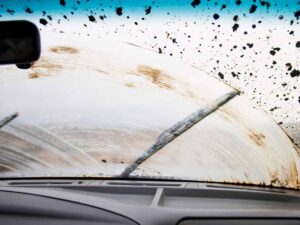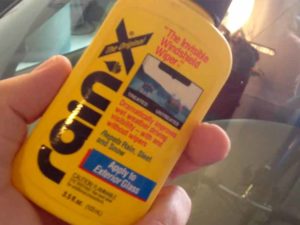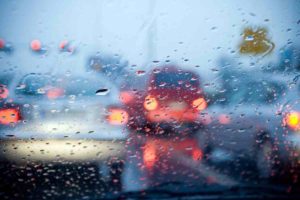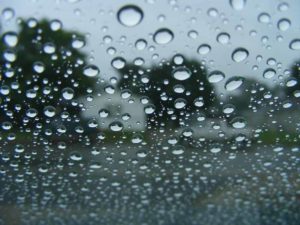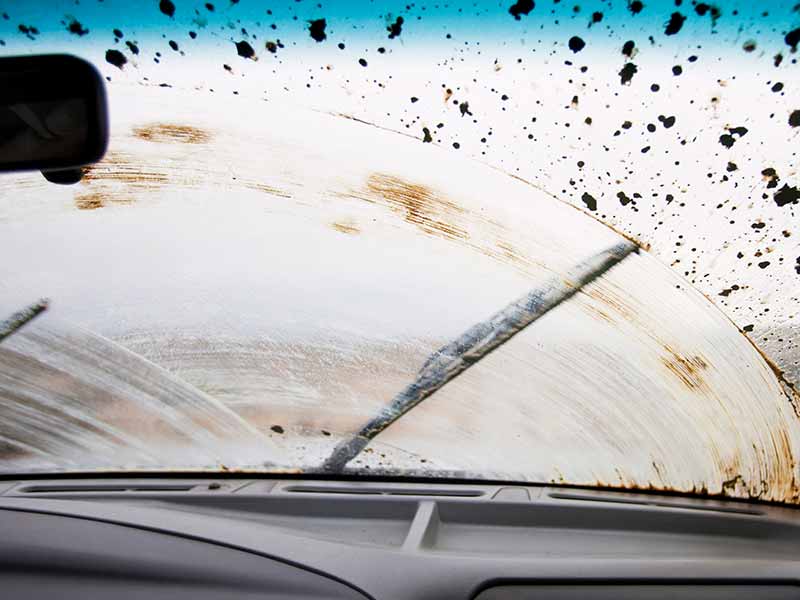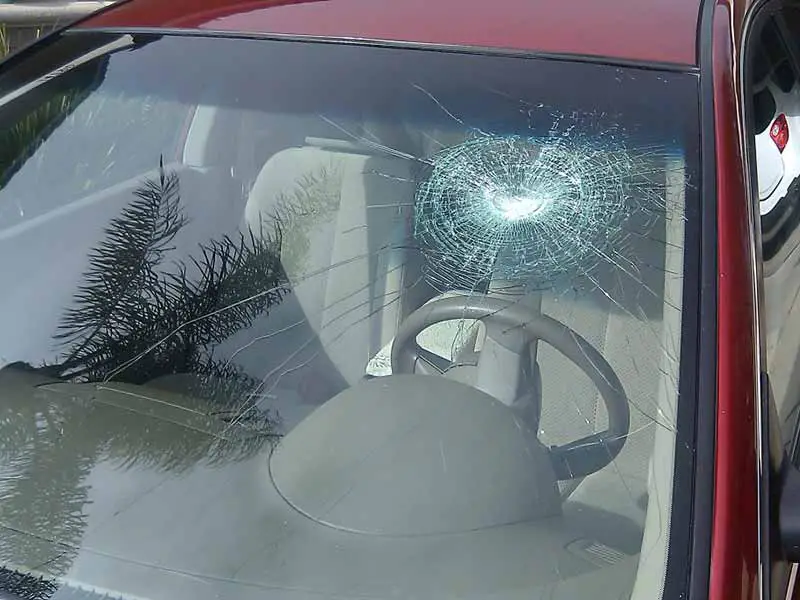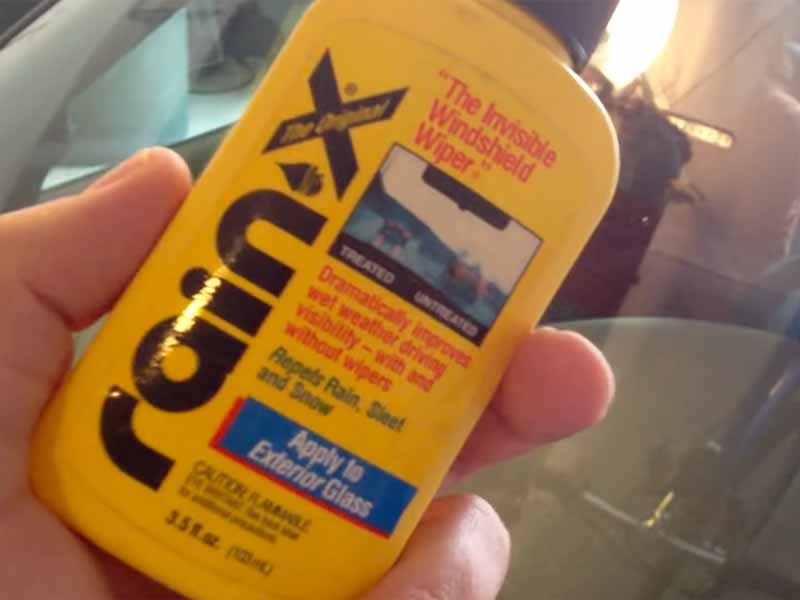Table of Contents
Water spots are extremely difficult to remove unless you know what can break down the minerals in hard water that have bonded to your glass. In this post, we are going to look at several commercial and DIY ways how to remove water spots from car windows.
Water stains leave small white spots on your windshield, side mirrors, and rear glass, making it difficult to see, particularly at night. When it starts raining, the problem gets worse, and your wipers don’t help.
So, what are your options for resolving these stubborn spots? What will break down the minerals bonded to your glass to clean and clear your windows?
Let’s dive into both the commercial and DIY options as well as explain what makes those water spots so difficult to remove and how to prevent water spots from occurring in the future.
How To Remove Water Spots From Car Windows
- Use a Commercial Water Spot Remover
- Use Vinegar
- Use Lemon Juice
- Use Fine Steel Wool
- Use WD40
- Use CLR
- Use Rubbing Compound
- Use a Clay Bar
DIY Method to Remove Water Spots from Car Windows
How to Remove Water Spots From Car Windows with Vinegar or Lemon Juice
Vinegar has always been a well-known window cleaner. because most water spot crystals are alkaline, the acid will dissolve them as well as cause them to dissolve.
Supplies
- Spray bottle
- White vinegar (or lemon juice)
- Purified water
- Paper towels, squeegee, or a cloth towel
Steps
- Fill the spray bottle halfway with pure water and halfway with white distilled vinegar (or lemon juice). After filling the bottle, shake it for a few seconds to mix the solution.
- Spray the diluted vinegar solution onto the water spots. Allow the vinegar to soak in for 1 to 2 minutes.
- Try to gently rub the spots away. If you scrub the glass too vigorously you risk scratching it. The acids in the vinegar should be doing most of the work to break down the hard water minerals and release their bond to the glass.
- If you have stubborn water spots, leave the solution on the glass for a bit longer and try again. Re-apply it as needed and be sure to not allow the vinegar solution to dry onto the window surface.
- Clean with the vinegar/water mixture car glass with a squeegee, towel, or a paper towel. Before you start cleaning the mixture off for the final details, make sure the glass is damp.
- When you’re finished it is a good idea to clean the glass one last time with a good glass cleaner. My best recommendation is Invisible Glass Glass Cleaner.
Other Methods to Remove Water Spots from Car Windows
How to Remove Water Spots From Car Windows with Fine Steel Wool
For particularly difficult water spots you can use fine-grade steel wool. Apply your water spot remover of choice to the spot on the glass and gently rub the steel wool on the spot.
Fine-grade steel wool shouldn’t damage glass. If anything, it should polish it. It is ideal for removing anything that is bonded to your automotive glass.
WD40 for hard water stains on windows?
While it isn’t my first choice, WD40 will break down the bonds that minerals have made with your windshield and allow you to wipe the water spots away. You may need to go back with a glass cleaner to remove any excess WD40 when you’re done, but it should do the trick.
Will CLR remove hard water stains from auto glass?
CLR is a great product for dealing with hard water stains in your bathroom and other places around the house, so it should be good for removing hard water stains on your auto glass as well right? Absolutely. It will work just as well on car windows as it will on your glass shower doors. You should be careful though not to get it on your window trim, seals, and other parts of your car or truck though. CLR isn’t designed or marketed as an automotive cleaner. It will be safe on glass, but other automotive surfaces might not react well.
Will rubbing compound remove water spots?
Rubbing compound is a great solution for removing difficult water spots 0n your windshield. Rubbing compound is a mild abrasive that will wear away the mineral deposits that water spot removers are unable to break down.
You can use a rubbing compound by hand or you can use a random orbital polisher to take a lot of the manual labor out of the job.
Some people even use polishing compounds to remove fine scratches from automotive glass.
Whether you use rubbing compound by simply applying it to a microfiber polishing pad or a dual action polisher, it should make fairly short work of difficult water spots.
I wouldn’t recommend this as your primary method of removing water spots on glass but it is a great alternative for difficult spots. It’s especially good if you already have a polisher and compound handy.
Does a clay bar remove water spots?
A clay bar can remove mineral deposits from glass but it isn’t the most efficient method to do so. Clay bars are much more effective at removing contaminants that are stuck to surfaces that washing won’t remove, but aren’t strongly bonded to the surface. It is a powerful option but a proper water spot remover solution is a better option.
If you have more difficult mineral deposits that water spot cleaners don’t seem to be removing, you’re better off using fine steel wool or a rubbing compound.
If you have a clay bar but don’t have fine steel wool or rubbing compound handy, it’s worth giving a clay bar a try before running to your local automotive supply store to find something more effective.
How to remove acid rain spots from car windows
Acid rain spots can be very similar to hard water spots. Acid rain is just normal rain that has mixed with atmospheric pollutants. These pollutants can be very harsh on your car or truck. When the rainwater evaporates it will leave the pollutants behind just like hard water leaves the minerals behind when it evaporates.
The same methods we use to remove hard water spots should work on the windshield and other windows of your car or truck.
What is the easiest way to remove water spots?
We’ve covered a lot of methods for removing water spots from glass surfaces, but what is the easiest method?
A purpose-designed water spot remover like Invisible Glass Glass Stripper is going to be the easiest and quickest way to remove mineral deposits and anything else that may be stuck to your windshield.
What causes water spots on cars?
Water spots on cars, whether on glass or paint, usually come from hard water or contaminants in rain.
What is hard water?
Hard water refers to tap water that has a high amount of dissolved minerals like calcium and magnesium in the water. Hard water is especially common with well water.
Hard water isn’t bad for you to drink, it’s actually probably quite healthy as a good source of minerals you might not get anywhere else. But it isn’t the best for your car glass or paintwork.
How do I prevent water spots on my car?
Now that we know what causes water spots, how do we avoid them? Let’s tackle each of the ways that hard water spots can occur.
How to prevent hard water spots when washing a car?
If you have a lot of minerals in your water at home or where ever you wash your car, you’ll need to take some extra steps to make sure the water doesn’t leave mineral deposits on your glass or paint as the water evaporates.
Here are some tips to help you avoid water spots in the future:
- Never let your vehicle air dry. Always dry it yourself. Some of the best methods for drying your car are using a microfiber drying towel or an air dryer. Here’s a great article we have on safely drying your car without scratching it.
- Always wash your car in the shade. This will give you more time to dry your car or truck off before the water has a chance to evaporate.
- Use a hard water filter for your garden hose to significantly reduce the amount of minerals in your car wash water.
- Use a rain repellent on your windshield, mirrors, and other glass to help water shed off the glass surface quickly and easily.
How to prevent water spots on car glass after rain?
The best method to prevent water spots on glass after a rainstorm is to use a high-quality rain repellent coating. Most people think of Rain-X when they think of rain repellents. I don’t recommend Rain-X because it wears off very quickly compared to so of the other competing products.
I really like Gtechniq G1 because it lasts up to 2 years compared to Rain-X which tends to only last around 3 months under the best of conditions and usually only around 30 days under typical conditions. If you want to know more about rain repellents I highly recommend you check out our article discussing the best rain repellent for windshields.
How to prevent sprinkler water spots on cars?
You obviously will want to avoid parking near sprinklers if you can. But often you don’t know you’re parking next to one. An in-ground sprinkler head could be right next to where you parked and you may not even notice it.
The best way to avoid hard water spots from sprinklers is to make sure that your glass is coated with a rain repellent and your paint is protected with a good quality paint sealant or ceramic coating. Glass rain repellents, paint sealants, and ceramic coatings are hydrophobic so they will help the water to bead up and roll off. Not all of the water will roll off but these coatings will still provide a protective layer between the water and your vehicle. This will make it much less likely to allow the minerals to bond to the surface as the water evaporates.
Final Thoughts
Removing hard water stains on glass is difficult when you don’t know what you’re up against, but a breeze when you have the right tools and methods to handle the job.
The best off-the-shelf product to remove hard water spots is Invisible Glass Glass Stripper. It can easily remove water spots from your windshield and other auto glass exterior windows and mirrors.
If you have some vinegar handy, just mix up equal parts water and vinegar to create your own DIY water spot remover.
Last note, an ounce of prevention is worth a pound of cure as they say. Keep your car protected with a good rain repellent and paint sealant. Use a water softener if you have hard water at your home. And avoid sprinklers if you can.
